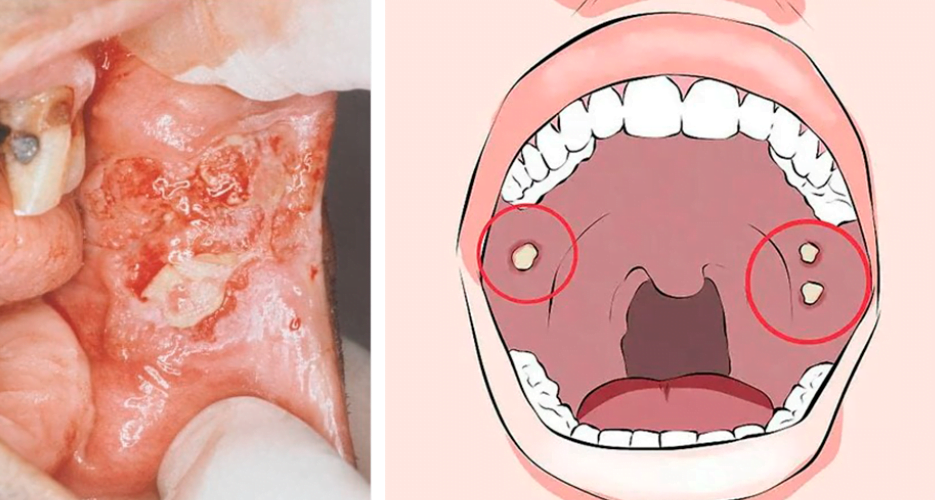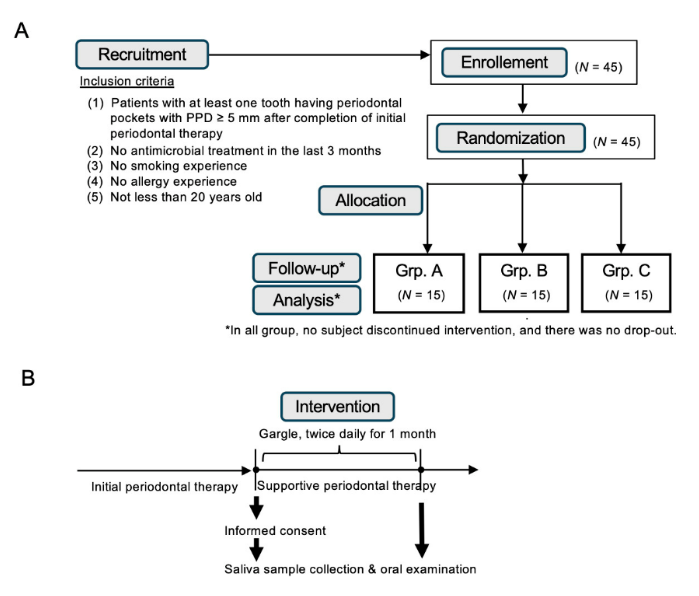Unveiling the Role of ORAI1 Calcium Channel in Oral Cancer Growth and Pain Sensation
In the realm of oral cancer research, a groundbreaking study led by researchers at NYU College of Dentistry has shed new light on the role of the ORAI1 calcium channel. This essential protein, often referred to as a “gatekeeper” for calcium entering cells, has emerged as a pivotal player in the progression of oral cancer and the generation of debilitating pain associated with the disease. The findings from this study not only deepen our understanding of the molecular mechanisms underlying oral cancer but also open doors to innovative approaches for its treatment. In this comprehensive article, we delve into the intricacies of this research, exploring how targeting the ORAI1 calcium channel could revolutionize oral cancer management.
ORAI1: The Key Player
The ORAI1 calcium channel, named after the mythological guardians of Mount Olympus in Greek mythology, plays a pivotal role in regulating calcium influx into cells. Calcium is a fundamental element for various cellular processes, but an excess of calcium over an extended period can have detrimental effects. The study conducted by NYU College of Dentistry sought to unravel the complex relationship between ORAI1 and oral cancer, focusing on its role in cancer progression and the experience of pain by patients.
Unmasking the ORAI1 Gene
The researchers began their investigation by analyzing tissue samples from human oral cancer tumors and healthy tongue tissues. Their discovery was striking – the ORAI1 gene, responsible for encoding the ORAI1 calcium channel, was found to be significantly overexpressed in cancerous tissues compared to their healthy counterparts. This overexpression hinted at the possibility of the ORAI1 channel being a key contributor to the development and growth of oral cancer.
![Soce And Activity Of Trp Channels In Oral Cancer Cells. (A) Measurements Of [Ca2+]Cyto (Shown As F340/F380 Ratio) In Scc-9 Cells Stimulated With Cpa In The Presence Or Absence Of The Orai Inhibitor Synta-66 (Left). Quantification Of Soce Corrected For Baseline Ca2+ Levels As Δpeak (F-F0) (Right). (B-D) Measurements Of [Ca2+]Cyto In Hsc-3 Cells In The Presence Of 2 Mm Ca2+ After Stimulation Of Trpm7 (B), Trpa1 (C) And Trpv1 (D) With The Specific Agonists Naltriben, Aitc And Capsaicin, Respectively. Measurements Of [Ca2+]Cyto Were Done Using A Flexstation 3 Plate Reader. Data In (A) Represents Means ± Sem From At Least Three Biological Replicates Per Group From Three Independent Experiments, Each Containing Regions Of Interest (Roi) From At Least 100 Cells. Data In (B) To (D) Represent Means ± Sem From At Least Three Biological Replicates Per Group From Three Independent Experiments. Statistical Tests Were Done Using Anova Followed By The Tukey’s Post-Hoc Test For Multiple Comparisons (A). ****P ≪ 0.0001. Soce and activity of trp channels in oral cancer cells. (a) measurements of [ca2+]cyto (shown as f340/f380 ratio) in scc-9 cells stimulated with cpa in the presence or absence of the orai inhibitor synta-66 (left). Quantification of soce corrected for baseline ca2+ levels as δpeak (f-f0) (right). (b-d) measurements of [ca2+]cyto in hsc-3 cells in the presence of 2 mm ca2+ after stimulation of trpm7 (b), trpa1 (c) and trpv1 (d) with the specific agonists naltriben, aitc and capsaicin, respectively. Measurements of [ca2+]cyto were done using a flexstation 3 plate reader. Data in (a) represents means ± sem from at least three biological replicates per group from three independent experiments, each containing regions of interest (roi) from at least 100 cells. Data in (b) to (d) represent means ± sem from at least three biological replicates per group from three independent experiments. Statistical tests were done using anova followed by the tukey’s post-hoc test for multiple comparisons (a). ****p < 0. 0001.](https://uniqa.dental/wp-content/uploads/2023/09/Unveiling-the-Role-of-ORAI1-Calcium-Channel-in-Oral-Cancer-Growth-and-Pain-Sensation-2.png)
SOCE and activity of TRP channels in oral cancer cells. (A) Measurements of [Ca2+]cyto (shown as F340/F380 ratio) in SCC-9 cells stimulated with CPA in the presence or absence of the ORAI inhibitor synta-66 (left). Quantification of SOCE corrected for baseline Ca2+ levels as Δpeak (F-F0) (right). (B-D) Measurements of [Ca2+]cyto in HSC-3 cells in the presence of 2 mM Ca2+ after stimulation of TRPM7 (B), TRPA1 (C) and TRPV1 (D) with the specific agonists naltriben, AITC and capsaicin, respectively. Measurements of [Ca2+]cyto were done using a FlexStation 3 plate reader. Data in (A) represents means ± SEM from at least three biological replicates per group from three independent experiments, each containing regions of interest (ROI) from at least 100 cells. Data in (B) to (D) represent means ± SEM from at least three biological replicates per group from three independent experiments. Statistical tests were done using ANOVA followed by the Tukey’s post-hoc test for multiple comparisons (A). ****P < 0.0001.
Calcium Influx: A Double-Edged Sword
To delve deeper into the function of the ORAI1 channel, the researchers turned their attention to human oral cancer cells. Activating the ORAI1 calcium channel triggered a substantial influx of calcium into these cancer cells. This surge in calcium levels led to the upregulation of a critical enzyme known as matrix metalloprotease 1 (MMP1). MMP1 has been associated with various cancer types, including oral cancer, where its overexpression is linked to metastasis and poor patient prognosis.
Cutting the ORAI1 Gene: Less Pain, Slower Growth
Intriguingly, the researchers observed a remarkable change in the course of oral cancer in animal studies when the ORAI1 gene was removed from cancer cells. Mice inoculated with cancer cells lacking the ORAI1 gene experienced slower tumor growth and significantly reduced pain. This observation underscored the pivotal role of ORAI1 in both cancer progression and pain sensation.
MMP1: The Messenger of Pain
To pinpoint the mechanism behind the heightened pain sensitivity associated with ORAI1, the researchers collaborated with scientists from the NYU Pain Research Center. They examined the levels of MMP1 expressed in the fluid surrounding oral cancer cells. Notably, cells lacking the ORAI1 gene secreted substantially less MMP1 into the surrounding fluid. When this fluid was combined with neurons from the trigeminal ganglia, responsible for pain transmission in oral cancer, it elicited a heightened response from the neurons. This finding strongly suggests that an abundance of MMP1 may be a key factor in generating increased pain sensitivity in oral cancer patients.
The Potential of ORAI1 Blockade
Remarkably, several FDA-approved drugs are known to block the ORAI1 calcium channel. While these drugs have been employed in other contexts, their potential in treating oral cancer remains largely unexplored. Future studies will investigate whether nanoparticles can be loaded with ORAI1-blocking drugs and precisely delivered into the tongues of animal models. This approach holds promise for halting oral cancer progression and alleviating the excruciating pain experienced by patients.
A Glimpse into the Future
In a world grappling with the opioid crisis, the implications of this research are profound. Dr. Rajesh Khanna, director of the NYU Pain Research Center and a co-author of the study, envisions novel pain treatments for oral cancer patients. By targeting the ORAI1 channel, not only can the progression from oral epithelial dysplasia to oral cancer tumors be potentially prevented or delayed, but the burden of pain experienced by patients can also be significantly alleviated.
Conclusion
In conclusion, the groundbreaking research conducted by NYU College of Dentistry has illuminated the critical role played by the ORAI1 calcium channel in the growth of oral cancer and the generation of excruciating pain. The identification of MMP1 as a potential pain mediator opens avenues for novel pain management strategies. With FDA-approved drugs already in existence to block ORAI1, the future of oral cancer treatment looks promising. This research not only advances our understanding of oral cancer but also offers hope for improved patient outcomes and enhanced quality of life.
Sources
- Science Daily ‘Gates of Heaven’ calcium channel drives oral cancer pain and growth – ORAI1 fuels oral cancers — and may provide promising therapeutic target September 5 2023.
- Science Signaling – The Ca2+ channel ORAI1 is a regulator of oral cancer growth and nociceptive pain 5 sep 2023.








